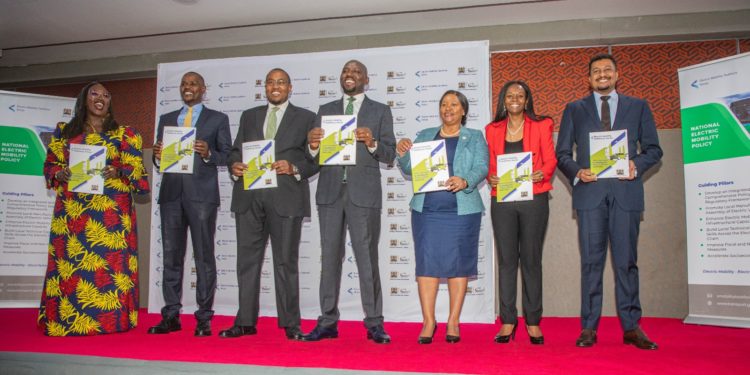The Ministry of Transport introduced the nation’s inaugural Electric Mobility Draft Policy. The initiative, unveiled yesterday, aims at promoting the adoption of electric vehicles (EVs) across diverse transportation modes encompassing roads, rail, air, and maritime.
Cabinet Secretary Kipchumba Murkomen heralded this milestone, underlining the policy’s role in furnishing a comprehensive framework for electric mobility development while facilitating a shift away from conventional internal combustion engines.
Murkomen emphasized collaborative efforts between the government, private sector entities, international investors, and academic institutions to fortify essential infrastructure for electric vehicles.
Outlined within the draft policy are incentives intended to drive EV adoption and backing for local manufacturing endeavors.
Murkomen disclosed plans for the introduction of distinct green-colored number plates designated for all electric vehicles, including two-wheelers, as part of initiatives aimed at raising awareness and fostering widespread acceptance of e-mobility.
Acknowledging Kenya’s prevalent reliance on fossil fuels in the transportation sector, Murkomen voiced apprehension over escalating greenhouse gas emissions and their detrimental effects on public health and the environment. He underscored the pressing need for action, citing projections of heightened emissions without intervention.
The Electric Mobility Draft Policy holds promise for manifold benefits, spanning environmental conservation, economic advancement, and public well-being.
By mitigating emissions, cutting operational expenses, and nurturing technological innovation, the policy positions Kenya as a pioneer in sustainable transportation solutions, with potential implications extending across Africa.
“I am confident that this policy will spur legislative and regulatory endeavors propelling our burgeoning e-mobility industry forward,” affirmed Murkomen.
The policy is slated for public engagement, affording Kenyans an opportunity to contribute ideas for further enhancements, ensuring that the nation’s transition to electric mobility is inclusive and efficacious.


















